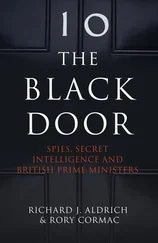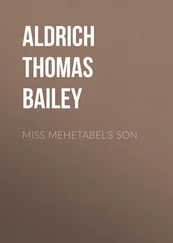These arrivals came not a moment too soon. Hitler’s attack on Poland had tipped Europe into all-out conflict, and Bletchley Park was now a fully operational war station. The pressure was on to make progress against Enigma. The most brilliant mind engaged in this task was Alan Mathison Turing, who made an early and important contribution. Despite understanding the abstract problems of Enigma some months into the war, GC&CS was having difficulty in breaking any real Enigma messages, and was not delivering much product. To have examples of the machine was not enough, since the security of the messages it sent depended on the ‘key’, in other words the settings of the machine, which changed each day. Turing was sent to see the remnants of the Polish code-breaking team, now residing near Paris, to try to work out what the British were doing wrong. The Poles explained that the British had failed to think through the way in which the wiring was attached to the rotors of the Enigma machine.
In early 1940, with this further helpful shove from its allies, Bletchley Park began breaking substantial amounts of Enigma traffic. There were many different Enigma cyphers, and to distinguish them, they were colour-coded. In February 1940, Bletchley Park began breaking ‘Red’, which was an invaluable system used for liaison between the German Army and the Luftwaffe. Periodically, a change to a German cypher system would cause the British code-breakers to lose it for a while, and quite often recovering it depended on second-guessing the lazy habits of the operators. German overconfidence in the improved Enigma machine led to basic mistakes that greatly simplified the task of those whose objective was to tease out the rotor setting for each day. 31
By early 1941, the flow of material from the breaking of Enigma was impressive. The intelligence from Bletchley Park was circulated on a very select basis, and was marked with the code word ‘Ultra’ to denote the extremely high level of security attached to the material. Menzies showcased his triumph by taking senior figures from Whitehall on day trips to Bletchley Park. On 11 January it was the turn of Alexander Cadogan. He noted in his diary:
Cold but thawing. Had a rush at the FO till 11, when I left with Menzies for Bletchley. Got there about 12.30. Very Interesting – I should like to spend a week there so as to try and understand it. A charming young Cambridge professor of geometry – Welshman [Gordon Welchman] – did his best with me. A good show, I think. 32
Others soon made the pilgrimage to the strange mock-Tudor mansion surrounded by temporary huts. On 6 September 1941 Winston Churchill himself, now Prime Minister, stood on a pile of bricks left by some workmen alongside Hut Six and gave an impromptu speech – delivered with deep emotion – about the value of Bletchley Park to the war effort. 33
Unbeknown to Churchill, Bletchley Park was in deep crisis. This was partly due to its rapid growth, and partly to the uncertain institutional boundaries that were evolving almost daily. The situation was exacerbated by a complex relationship with the ‘Y services’, the lower-order radio intercept organisations run by the Army, Navy and Air Force that fed Bletchley with captured traffic. Meanwhile the three armed services were themselves vying for increased control over who received the output from GC&CS. This was precisely the kind of complex organisational puzzle that Menzies was ill-equipped to deal with. Matters reached a head in the autumn of 1941, forcing Menzies to appoint a Joint Committee of Control, which included members of both SIS and GC&CS. However, as the historian Philip Davies observes, ‘Like so many of Menzies’ administrative initiatives, the committee proved unequal to the task.’ 34 There was also a general resources problem. Having made significant inroads into German Enigma traffic, there were simply not enough staff at Bletchley Park to process the vast torrents of accessible German communications. Neither Alastair Denniston nor his deputy, Edward Travis, had the pull in Whitehall to overcome the shortage. 35
Churchill was not ignorant of this state of affairs for long. Recalling the Prime Minister’s kind words during his recent visit, the code-breakers resolved to go straight to the top. On 21 October 1941, four of the most brilliant minds at Bletchley Park, Hugh Alexander, Stuart Milner-Barry, Alan Turing and Gordon Welchman, wrote directly to Churchill to beg for more resources, explaining that their work was so secret that it was hard to explain their requirements to those who controlled personnel. 36 So secret was their missive that Milner-Barry took the train to London and delivered it personally to 10 Downing Street. Churchill was shocked by these revelations, and demanded ‘Action This Day’. He ordered his military assistant, General Hastings ‘Pug’ Ismay, to ensure that GC&CS had everything it needed, and to report that this had been done. 37 As a result, Bletchley Park underwent a further expansion, and more importantly a major reorganisation. 38
GC&CS was now divided into two distinct parts, civil and military. The end of the Blitz meant that the civil side, which dealt with economic and diplomatic traffic, could be sent back to London with relative safety. It took up residence in Berkeley Street, partly because the work of attacking diplomatic codes often had to be coordinated with discreet telephone taps on the foreign embassies in London. The military side remained at Bletchley Park. This did not resolve the heated arguments about who controlled the spoils of GC&CS, but it did address the immediate accommodation problems, and created two organisations of a more manageable size. Menzies retained his post as overall Director, but was a notably absentee landlord. Alastair Denniston was sent to London as Deputy Director (Civil), while his talented deputy, Commander Edward Travis, remained at Bletchley as Deputy Director (Services). 39 Travis was now the rising star. 40
British code-breaking in the early years of the war was not just about the German military secrets revealed through Enigma. Even harder to break than the Enigma machine had been a German teleprinter on-line cypher machine known as ‘Tunny’, used by the German High Command to produce ‘Fish’ messages. On-line cypher machines were especially challenging because they were automatic, and sent a continuous stream of text, much of it dummy material, sometimes offering no obvious start or end points to each message. This went some way to eliminating another weakness of the Enigma machine – its operators, who were prone to human error. To address the problem of ‘Tunny’, the British later built ‘Colossus’, one of the earliest general-purpose electronic machines, and perhaps the first device that might be described as a ‘computer’. Conceived by Professor Max Newman and then developed by Tommy Flowers from the British Post Office research facility at Dollis Hill, this was one of the supreme technical achievements of the war. 41
The achievements of the civil side of GC&CS have often been neglected. By 1940 it was analysing not only the diplomatic codes and cyphers of the Axis powers, but also those of more than twenty other countries. These included the Soviet Union, which did not enter the war until it was attacked by Germany on 22 June 1941. The diplomatic communications of quarrelsome allies such as the Free French, or important neutrals such as the Turks and the Spanish, proved as interesting and as useful as those of Germany. Moreover, the traffic of Germany’s allies, such as Japan, could shed a penetrating light on the mindset of Berlin. Throughout 1941 Hitler held regular meetings with Baron Oshima, the Japanese Ambassador in Berlin, often referred to as ‘Hitler’s Japanese confidant’. Japan had its own complex cypher, known as ‘Magic’, produced by a machine called ‘Purple’, and Oshima used it to send detailed accounts of his long conversations with Hitler to Tokyo. ‘Magic’ had been broken by the Americans, and early Anglo–American cooperation on code-breaking ensured that all this was being read in London. Remarkably, Berkeley Street was also working on the cyphers of the United States, which did not join the war until the Japanese attack on Pearl Harbor on 7 December 1941. 42
Читать дальше












